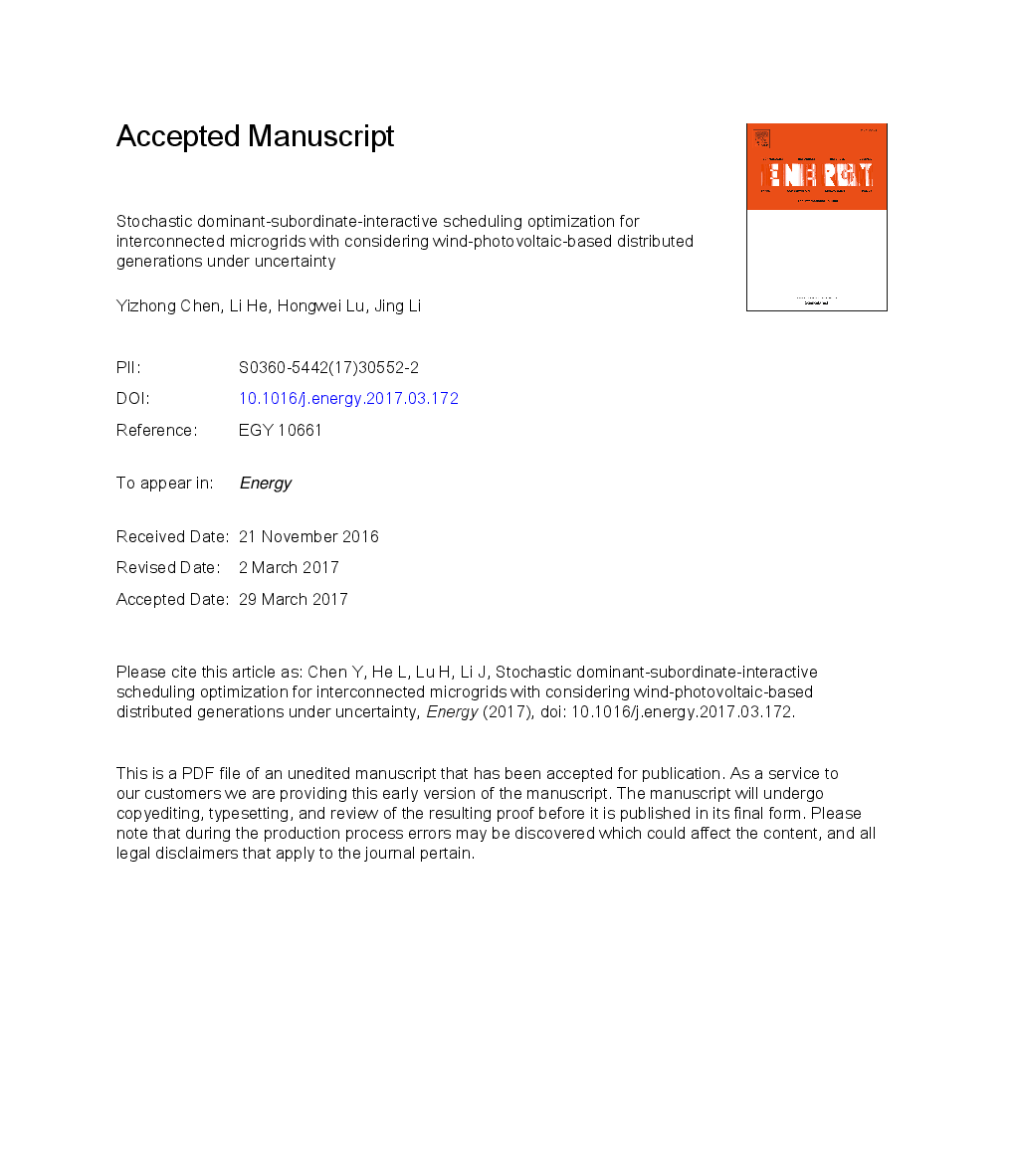ترجمه فارسی عنوان مقاله
بهینه سازی زمانبندی غلط غالب و وابسته به تعامل اتفاقی برای میکروپردرهای متصل شده با توجه به نسلهای توزیع مبتنی بر فتوولتائیک تحت عدم قطعیت
عنوان انگلیسی
Stochastic dominant-subordinate-interactive scheduling optimization for interconnected microgrids with considering wind-photovoltaic-based distributed generations under uncertainty
| کد مقاله | سال انتشار | تعداد صفحات مقاله انگلیسی |
|---|---|---|
| 142599 | 2017 | 57 صفحه PDF |
منبع

Publisher : Elsevier - Science Direct (الزویر - ساینس دایرکت)
Journal : Energy, Volume 130, 1 July 2017, Pages 581-598
ترجمه کلمات کلیدی
تصادفی، منابع انرژی توزیع شده، تولید برق سبز، انتشار آلاینده ها، ساختار بی سطح،
کلمات کلیدی انگلیسی
Stochastic; Distributed energy resource; Green electricity generation; Pollutant emissions; Bi-level structure;

